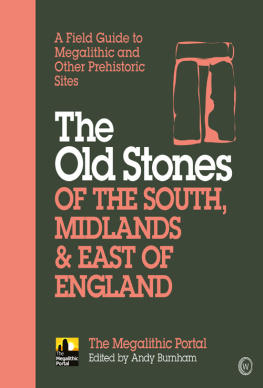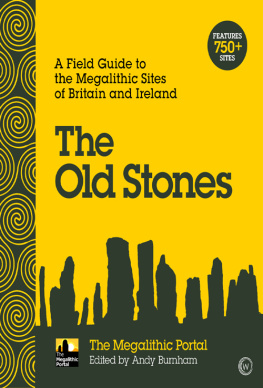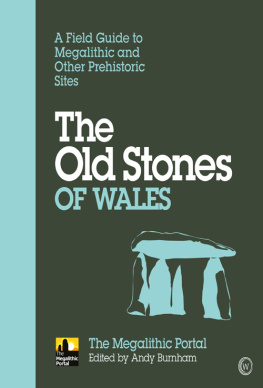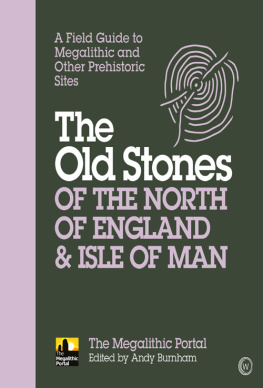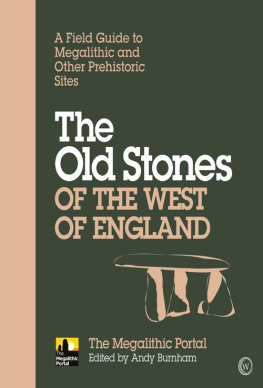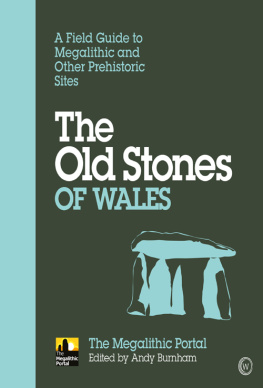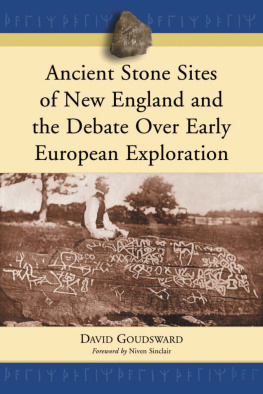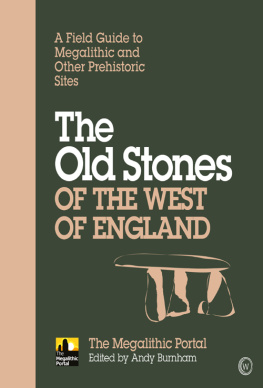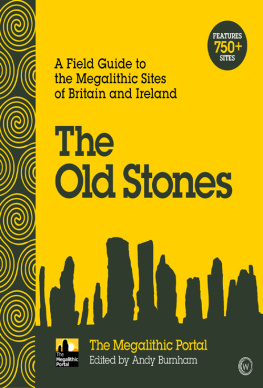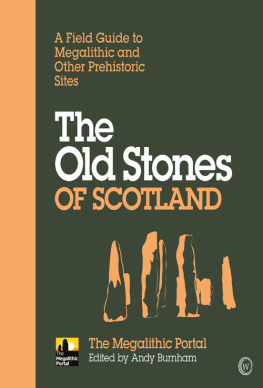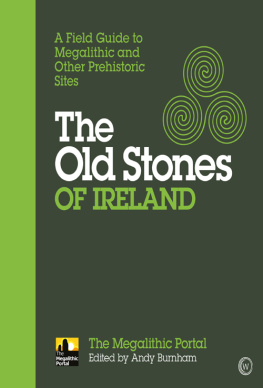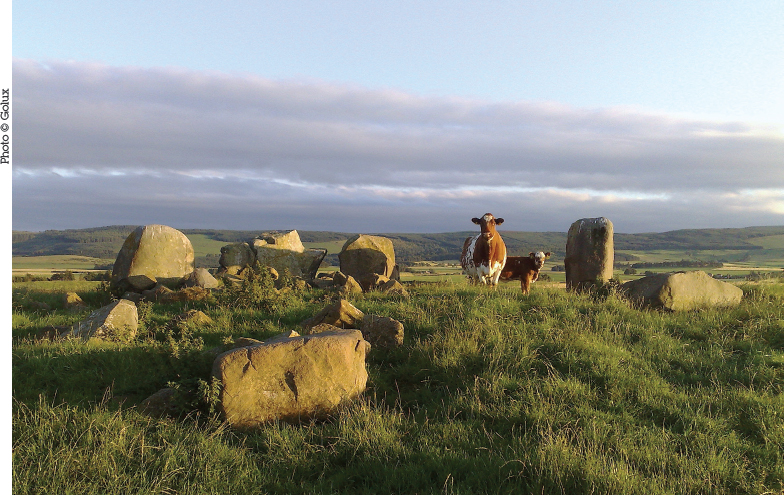THE OLD STONES OF THE SOUTH, MIDLANDS & EAST OF ENGLAND
A Field Guide to Megalithic and Other Prehistoric Sites
The Megalithic Portal
Edited by Andy Burnham
THE OLD STONES OF THE SOUTH, MIDLANDS & EAST OF ENGLAND
This ebook covers the Neolithic and Bronze Age remains of southern and central England, from Wiltshire to the west and Derbyshire in the north, over to Kent and Essex in the east yes, there are megalithic sites in Essex read on to find out where! Wiltshire needs no introduction, but dont forget the lesser-known sites there such as Merlin's Mound, which was recently confirmed as a prehistoric sibling to Silbury Hill. Unlike most books on megalithic sites, we haven't overlooked the southeast of England, where there are an unexpected number of beautiful long and round barrows, including one with its own protected view of St Paul's Cathedral. And if you want your fill of megalithic sites, there is no need to travel any further afield than Derbyshire, where there are many lovely sites to visit, from the massive henge of Arbor Low to the charming little woodland circle of Doll Tor to the fascinating complex of Barbrook, with one of the Peak Districts best-preserved stone circles.
The Old Stones of the South, Midlands & East of England is part of a series covering the megalithic and other prehistoric sites of Britain and Ireland. The series is published together as The Old Stones: A Field Guide to the Megalithic Sites of Britain and Ireland, available as a book and an ebook.
Contents
Top 10 Pieces of Music Inspired by Prehistory
Andy Burnham
Stonehenge: Model of a Geocentric Universe?
Jon Morris
Stonehenge and the Neolithic Cosmos
N.D. Wiseman
Feasting and Monument Building
Barney Harris
Cats Brain: A House for the Living?
Andy Burnham
Development of the Avebury Landscape
Joshua Pollard
Unique Transfigurative Rock Art?
Terence Meaden
Archaeoacoustics
Steve Marshall
Dorstone Hill: A Unique Configuration of Monuments
Andy Burnham
Looking to the Land of the Ancestors
Vicky Tuckman
A Phenomenology of Shadow
Daniel Brown
Icknield Way: Ancient Track or Medieval Fantasy?
Keith Fitzpatrick-Matthews
Must Farm: An Extraordinary Fenland Survival
Jackie Bates
Chalk Artefacts
Anne Teather
Insights from a Bronze Age Timber Circle
Andy Burnham
Editors Introduction
Andy Burnham, founder and Editor of the Megalithic Portal
This is the first book written by and for prehistoric site enthusiasts. It is a truly collaborative project just like the Megalithic Portal website itself that brings together photographs, site information, theories and expertise from the thousands of people that use and post on the site. Focusing on sites from the Neolithic and Bronze Age, this is the most comprehensive guide ever created to the best ancient places to visit in Britain and Ireland, offering an up-to-date look at the archaeology, including many extraordinary discoveries and theories that have been featured on the pages of the Megalithic Portal over the years, as well as a taster of the more mysterious side of things.
Just as the Portal is a collaborative effort, so no one persons ideas or theories are given more weight in this book. Instead, we celebrate the advances in archaeological practice, theory, dating and analysis that have taken place in the last 25 years. Geophysics, excavation and dating techniques have progressed in this time. There has also been an increased recognition of the importance of accepting non-academic viewpoints, whether from schoolchildren, community volunteers or some of the more leftfield theorists. Alternative ways of exploring and appreciating sites and wider landscapes previously the realm of a radical fringe have filtered into the mainstream. Landscape archaeology has in many cases accepted if not wholeheartedly embraced phenomenology and multi-sensory approaches, which anyone can try with an open mind and a bit of practice. Advances in technology offer new ways of experiencing sites, for example through augmented reality that merges GIS (geographical information system) landscape models with 3D reconstructions of structures.
Recently, I've been rereading early 1990s editions of 3rd Stone magazine, styled for the new antiquarian, the realm of ley hunters and earth mysteries researchers. Have we moved on in 25 years? Ideas of alignments between sites, of stone shapes matching the landscape, of the importance of colour, sound and experiencing sites in different frames of mind have filtered through to theoretical archaeology, to be discussed openly in papers and at conferences even if they dont always get past the gatekeepers of archaeology books and magazines for consumption by the general public.
About the Megalithic Portal
The Megalithic Portal is completely independent, with no outside funding save for what we can raise with a bit of advertising on the site, and now through royalties from this book, all of which are being ploughed back into the dayto-day running and further development of the website and our other projects. For the last 10 years we have run as a membership society, similar to any other archaeology society, except with an international reach and outlook. We hold meetings by phone conference and our society members hail from all over Europe, as well as North America, Australia, New Zealand, Japan and beyond.
Ardlair recumbent stone circle Cows represent one of the biggest challenges faced by the megalith enthusiast!
One of the inspirations for the Megalithic Portal was my own experience, in the 1980s and early 1990s, of reading about sites in books or magazine articles with no accurate location details. Even now, articles and papers often dont give proper location information. I started compiling links to sites on the early web in 1996. People began to offer their own information and photos, and a collaborative project was born. The Megalithic Portal was formed in 2001 to continue this process. Much of the sites content has been created by a group of several hundred dedicated volunteers, but there is a huge range in involvement, from those sending in a couple of photos or sites, to people who have contributed more than 10,000 of these.
About this Book
This book is not just made up of my own favourite sites but has been compiled in a collaborative way, just like the Megalithic Portal itself. Contributions in the form of articles, which appear throughout the book, have come in from scores of writers, from archaeologists to alternative theorists to keen site visitors. Many of Britain and Irelands top prehistorians have kindly contributed pieces about their research.
I have included opinions from a wide range of people who have original ways to approach ancient sites. While I dont personally go along with all of the ideas proposed, I feel its important to at least give them an airing and let you, the reader, make up your own mind. Sometimes thinking about a problem in a new and creative way can lead to unexpected breakthroughs and we should not be closed minded to different ways of experiencing ancient sites.
The Megalithic Portal photo gallery contains images from several thousand different contributors. Each photo has a voting button allowing visitors to like a specific site. This anonymous voting data provided the basis of a longlist for sites to include in the book, from which a team of Megalithic Portal members selected the final list of sites to include for each region. With the voting data in mind, as well as their local knowledge, the team identified the very best sites and gave these a star 
Next page
